How to Design and Build a Wooden Gazebo
Building a wooden gazebo can be one of the most rewarding DIY projects you undertake. Not only does it add a stunning focal point to your yard, but it also creates a cozy space for relaxation, entertaining, or enjoying nature. Imagine sipping your morning coffee while nestled in a beautiful gazebo, surrounded by the gentle rustle of leaves and the sweet songs of birds. Sounds dreamy, right? In this article, we’ll guide you through every step of the process, from choosing the perfect location to ensuring your gazebo remains a cherished part of your outdoor space for years to come.
The first step in your gazebo project is selecting the right location. This decision is crucial as it can greatly affect your gazebo's functionality and enjoyment. Think about the amount of sunlight your gazebo will receive throughout the day. Would you prefer a sunny spot to soak up the rays, or a shaded area to escape the heat? Additionally, consider the wind direction; placing your gazebo in a sheltered spot can make it more enjoyable during breezy days. Proximity to your home is also essential—having your gazebo close by makes it easier to grab snacks and drinks for those summer gatherings. Ultimately, the right location can transform your gazebo from just a structure to a beloved outdoor retreat.
Once you’ve settled on a location, it’s time to dive into the fun part: designing your gazebo! This is where your creativity can shine. Think about what shape and size would best complement your yard. Do you envision a classic octagonal gazebo, or perhaps a more contemporary rectangular design? The roof style is another important factor—do you prefer a traditional peaked roof or something more modern and flat? The design should not only reflect your personal style but also fit harmoniously within your outdoor space. Consider sketching out your ideas or using design software to visualize your dream gazebo.
Before you start construction, it's essential to gather the right materials. The type of wood you choose will play a significant role in the gazebo's durability and aesthetic appeal. Here’s a quick overview of the most popular wood types:
| Wood Type | Pros | Cons |
|---|---|---|
| Cedar | Natural resistance to decay, beautiful aroma | More expensive than other options |
| Pine | Cost-effective, easy to work with | Less durable, requires treatment |
| Redwood | Highly durable, resistant to insects | Can be pricey, limited availability |
In addition to wood, you'll need fasteners like screws and nails, as well as protective finishes such as stains or sealants to enhance the longevity of your gazebo. Remember, investing in quality materials now can save you headaches down the road!
Choosing the right wood is vital for longevity and appearance. Cedar is often a favorite due to its natural resistance to decay and insects, making it a great choice for outdoor structures. However, it can be on the pricier side. On the other hand, pine is an excellent budget-friendly option, but it requires proper treatment to withstand the elements. Redwood combines beauty with durability, but its availability can sometimes be an issue. Weigh the pros and cons carefully, and select the wood that best aligns with your vision and budget.
Once your gazebo is built, it’s time to think about the finishing touches. The right treatment can enhance its appearance and protect it from the elements. Consider applying a stain to highlight the wood's natural beauty while adding a layer of protection. If you prefer a pop of color, a high-quality outdoor paint can do the trick. Sealants are also crucial, as they provide an additional barrier against moisture, ensuring your gazebo remains in great shape through rain and shine.
Now that you have your design and materials ready, let’s discuss the building process. Start with a solid foundation—this is key to ensuring your gazebo stands the test of time. Next, construct the frame, followed by the roof. Don’t rush through this step; take your time to ensure everything is level and secure. Finally, add any finishing touches, like railings or decorative elements, to make your gazebo truly unique. By familiarizing yourself with these steps, you’ll find the construction process much smoother and more enjoyable.
Before you start hammering away, it’s crucial to check local regulations and obtain any necessary permits. Each area has different rules regarding structures like gazebos, so make sure you’re compliant to avoid any potential legal issues. This step may seem tedious, but it’s essential for a hassle-free project.
Safety should always be a top priority during construction. Make sure to wear protective gear, such as gloves, goggles, and a hard hat. It’s also wise to have a first aid kit on hand, just in case. Working with power tools can be dangerous, so take your time and follow all safety guidelines to ensure a secure building environment for you and your helpers.
Once your gazebo is complete, regular maintenance is key to keeping it in great condition. Make it a habit to clean your gazebo periodically, removing debris and dirt that can accumulate over time. Inspect for any signs of wear or damage, and address these issues promptly to prevent further deterioration. Seasonal preparations, like applying a fresh coat of sealant before winter, can also prolong its life and beauty. By taking these steps, your gazebo can remain a stunning centerpiece in your yard for many years to come.
- How long does it take to build a gazebo? The time it takes to build a gazebo can vary depending on the size and complexity of the design, but most projects can be completed in a weekend or two.
- Do I need a permit to build a gazebo? It depends on your local regulations. Always check with your local authorities to ensure compliance.
- What type of wood is best for outdoor use? Cedar and redwood are excellent choices due to their natural resistance to decay and insects.
- How do I maintain my gazebo? Regular cleaning, inspections, and applying protective finishes will help maintain your gazebo's beauty and longevity.

Choosing the Right Location
When it comes to constructing your dream gazebo, one of the most critical steps is . Imagine it as the foundation for your outdoor sanctuary; the spot you select can make or break your entire project. To enhance both enjoyment and functionality, consider a few key factors that will help you find the perfect place to set up your gazebo.
First and foremost, think about sunlight. Do you want a sun-drenched retreat where you can soak up the rays, or a shaded hideaway that offers relief from the heat? Positioning your gazebo to take advantage of natural light can create a welcoming atmosphere. However, be cautious of overly bright spots that might turn your cozy nook into a sizzling oven during the summer months.
Next up is wind direction. Understanding how the wind typically flows through your yard can help you avoid a drafty gazebo that becomes a less-than-ideal hangout spot. You might want to consider placing your gazebo near existing structures like your home or tall trees, which can act as natural windbreaks. This way, you can enjoy a gentle breeze without the chill that can spoil your outdoor experience.
Another factor to consider is the proximity to your home. A gazebo that is too far from your house might feel isolated and inconvenient, especially if you plan to use it for entertaining guests or family gatherings. Ideally, you want your gazebo to be easily accessible, making it a seamless extension of your living space. Think about how often you’ll be using it and how it fits into your daily life.
Lastly, take into account the view. A gazebo should enhance your outdoor experience, so choose a location that offers a pleasant outlook. Whether it's a garden, a pond, or a scenic landscape, having a beautiful view can transform your gazebo into a personal retreat. You can even position it to frame specific vistas, creating an inviting space that draws you outside.
In summary, finding the right location for your gazebo involves a mix of practical considerations and personal preferences. By paying attention to sunlight, wind direction, proximity to your home, and the overall view, you can create a space that not only looks great but also serves as a cherished spot for relaxation and enjoyment.
- What is the best location for a gazebo? The best location depends on your preferences for sunlight, wind protection, and views. Aim for a spot that balances these elements for maximum comfort.
- How far should a gazebo be from my house? Ideally, your gazebo should be close enough for easy access, but far enough to provide a sense of privacy. A distance of 10 to 20 feet is often recommended.
- Can I place my gazebo in a shaded area? Yes, placing your gazebo in a shaded area can provide relief from the sun, making it a comfortable retreat during hot days.

Designing Your Gazebo
Creating a design that suits your style and needs is essential when it comes to building a gazebo. Think of your gazebo as an extension of your home—a cozy nook where you can unwind, entertain friends, or enjoy a quiet moment with a book. The design process can be thrilling, but it can also feel overwhelming with so many options available. So, how do you choose the right gazebo design that perfectly complements your outdoor space? Let's dive into the key elements you should consider.
First and foremost, you’ll want to think about the shape and size of your gazebo. Common shapes include circular, square, or rectangular forms, each offering a unique aesthetic. A circular gazebo can create a romantic, whimsical feel, while a square or rectangular design often provides a more modern look. Size is equally important; consider how many people you want to accommodate. A small gazebo might be perfect for intimate gatherings, while a larger one could host family parties or community events. Here’s a simple guideline:
| Size | Recommended Capacity |
|---|---|
| 8x8 ft | 2-4 people |
| 10x10 ft | 4-6 people |
| 12x12 ft | 6-10 people |
Next, consider the roof style. The roof not only adds to the overall look of your gazebo but also impacts its functionality. Options like gable, hip, or even a pagoda-style roof can dramatically change the feel of your structure. Gable roofs are popular for their classic appeal and effective rain runoff, while hip roofs provide a more elegant silhouette. If you’re feeling adventurous, a pagoda roof can bring an exotic touch to your backyard.
Another crucial aspect to think about is accessories and features. Do you want to add screens to keep bugs out? Perhaps you envision string lights for those magical evenings? Consider incorporating built-in benches, a fire pit, or even a ceiling fan for added comfort. These features can transform your gazebo into a multifunctional space that you’ll love using year-round. Remember, the more personalized your design, the more you’ll enjoy your gazebo.
As you finalize your design, don’t forget about the materials. The choice of wood, for example, can affect not just the look but also the longevity of your gazebo. Cedar, redwood, and pressure-treated pine are popular choices, each bringing its own charm and durability. Pair your wood choice with a suitable finish to enhance its beauty and protect it from the elements.
Lastly, consider the surrounding landscape. Your gazebo should harmonize with its environment. Think about how it will look against your garden, patio, or even your home. Incorporating plants, flowers, or decorative stones around the gazebo can create a seamless transition from the structure to the natural surroundings. This not only enhances the visual appeal but also adds to the overall ambiance of your outdoor space.
In summary, designing your gazebo is a fun and creative process that allows you to express your personal style while enhancing your outdoor living experience. By carefully considering the shape, size, roof style, features, materials, and landscape integration, you’ll be on your way to creating a stunning gazebo that you and your loved ones can enjoy for years to come.

Materials Needed
When embarking on the adventure of building a wooden gazebo, it's essential to gather the right materials to ensure your structure is not only sturdy but also aesthetically pleasing. This project requires a combination of wood, fasteners, and finishes that align with your design vision and environmental conditions. Let's dive into the key materials you'll need.
First and foremost, the choice of wood is critical. Different types of wood have their unique characteristics, influencing both the durability and appearance of your gazebo. For example, cedar is a popular choice due to its natural resistance to decay and insects, while redwood offers a beautiful grain and rich color but can be pricier. On the other hand, pressure-treated pine is a cost-effective option that can withstand the elements when properly treated. Here’s a simple comparison of these woods:
| Type of Wood | Durability | Cost | Appearance |
|---|---|---|---|
| Cedar | High | Moderate | Warm, reddish hue |
| Redwood | High | High | Rich color with fine grain |
| Pressure-treated Pine | Moderate | Low | Light color, can be stained |
In addition to wood, you’ll also need various fasteners to hold everything together. These include screws, nails, and brackets, which should be made from galvanized steel or stainless steel to prevent rusting. Depending on your design, you may also require post anchors for securing the gazebo to the ground, ensuring it withstands strong winds and other weather conditions.
Let’s not forget about the finishing materials. Once your gazebo is constructed, applying a protective finish is crucial. You can choose from a variety of options, including stains, paints, and sealants. Stains enhance the natural beauty of the wood while providing protection against UV rays and moisture. Paints offer a broader range of colors but may require more maintenance over time. Sealants, on the other hand, create a barrier against water damage and should be reapplied periodically.
Lastly, gather any additional materials you might need for your gazebo's unique features, such as screening for insect protection, lighting fixtures for ambiance, or furniture to make the space inviting. Planning ahead and having all your materials ready will streamline the building process, making it more enjoyable and efficient.
In summary, the right materials are the backbone of your gazebo project. From selecting the proper wood to choosing durable fasteners and protective finishes, each component plays a vital role in the overall success of your gazebo. So, roll up your sleeves, gather your materials, and get ready to create a stunning outdoor retreat!
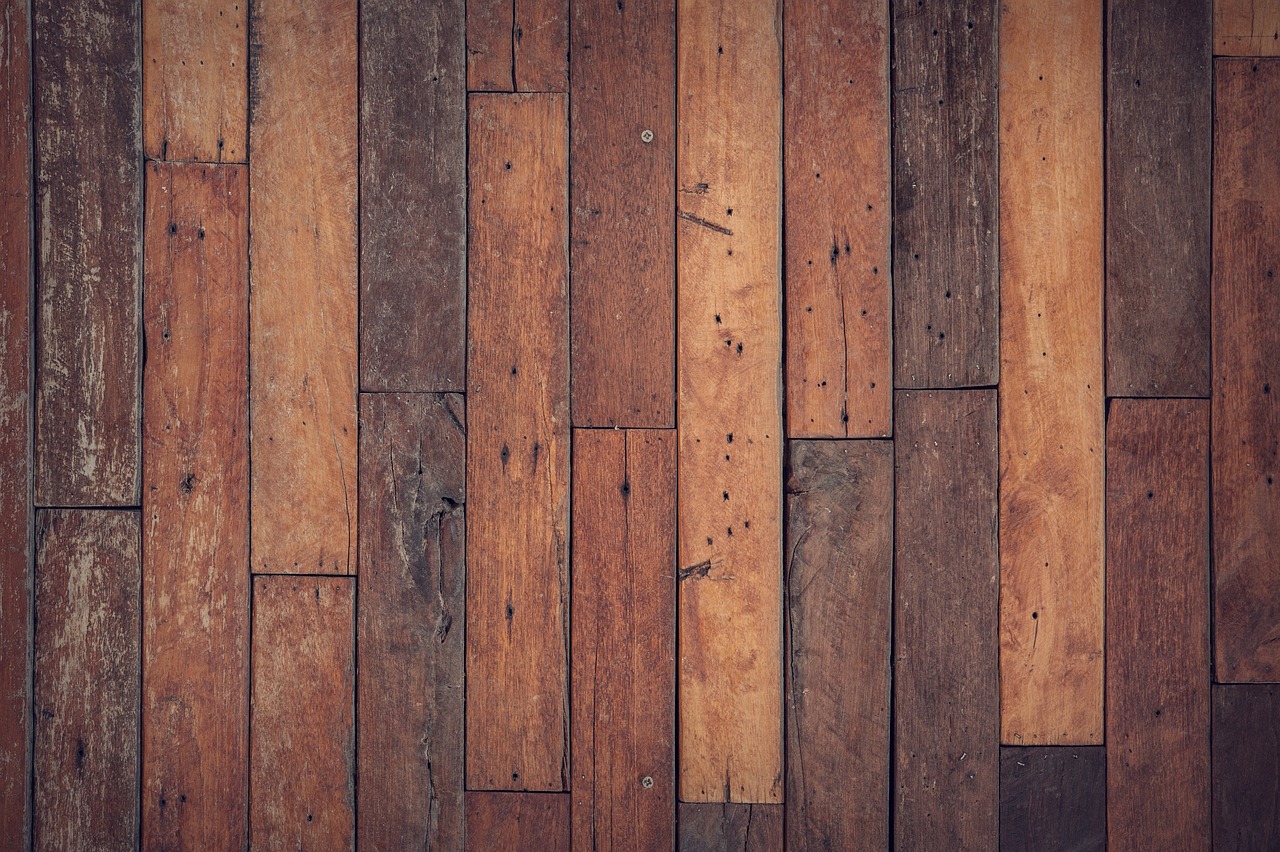
Wood Selection
When it comes to constructing your wooden gazebo, is one of the most critical decisions you'll make. The type of wood you choose not only affects the durability and maintenance of your gazebo but also its overall aesthetic appeal. Think of wood as the backbone of your project; the right choice can make your gazebo a stunning centerpiece in your backyard, while the wrong one can lead to headaches down the line.
Let's dive into some popular wood options that you can consider for your gazebo. Each type has its own set of advantages and disadvantages, so it's essential to evaluate what suits your needs best:
| Type of Wood | Pros | Cons |
|---|---|---|
| Cedar |
|
|
| Pine |
|
|
| Redwood |
|
|
Choosing the right wood is like picking the right ingredients for a recipe; the quality of your final product depends on it. For instance, if you live in an area with high humidity or frequent rain, opting for cedar or redwood might be your best bet due to their natural resistance to moisture. On the other hand, if you're on a budget, pressure-treated pine can be a practical choice, but be prepared for some extra maintenance down the road.
Additionally, consider the finish you want for your gazebo. A natural finish can highlight the wood's grain, while a stain or paint can add a splash of color and protect against the elements. Just remember, the more you invest in quality wood and proper finishes, the longer your gazebo will stand tall against the test of time.
In conclusion, take your time to research and weigh your options when selecting wood for your gazebo. Think of it as laying a solid foundation for your outdoor retreat. The right choice will not only enhance the beauty of your space but also provide a welcoming haven for years to come.
Q: What is the best wood for outdoor furniture?
A: Cedar and redwood are excellent choices due to their natural resistance to decay and insects.
Q: How often should I treat my wooden gazebo?
A: It's recommended to reapply protective treatments every 1-3 years, depending on the climate and exposure to elements.
Q: Can I use pressure-treated wood for my gazebo?
A: Yes, pressure-treated wood is a cost-effective option, but ensure you use it wisely and maintain it regularly to avoid issues.
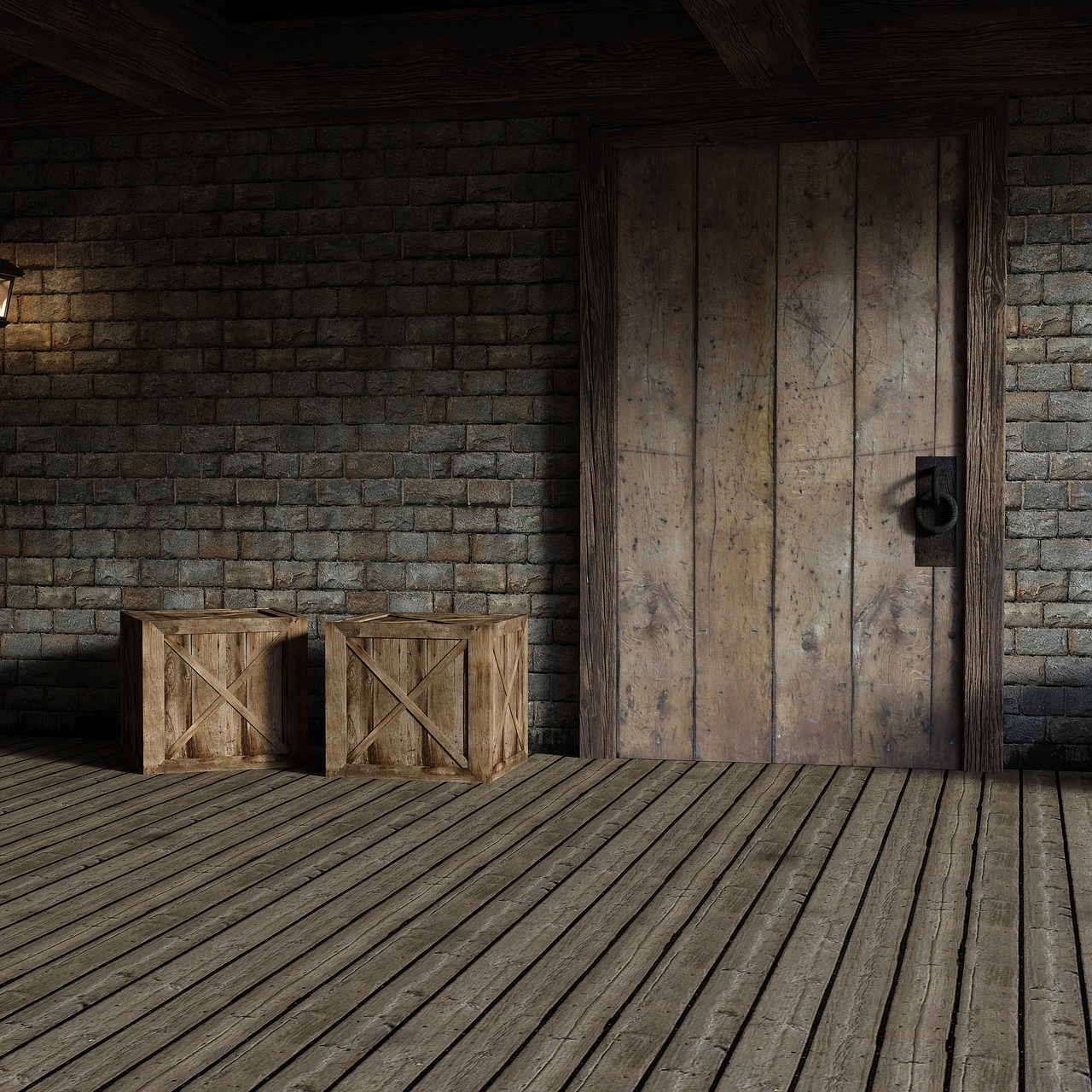
Finishing Touches
Once you've successfully built your wooden gazebo, the are what truly elevate it from a simple structure to a stunning centerpiece in your garden. Think of these final steps as the icing on the cake; they not only enhance the aesthetic appeal but also provide essential protection against the elements. So, what should you focus on?
First, consider applying a high-quality stain or paint to your gazebo. This is not just about color; it's about durability. A good stain penetrates the wood, providing a protective barrier against moisture and UV rays, while paint can offer a vibrant look that matches your home. When selecting a color, think about how it complements your existing outdoor space.
Next up is the application of a sealant. This is crucial for maintaining the longevity of your gazebo. Sealants create a waterproof layer that helps prevent wood rot and insect infestations. Ensure that you choose a sealant that is suitable for outdoor use and is compatible with your chosen stain or paint. A well-sealed gazebo can withstand rain, snow, and sun, keeping it looking fresh for years to come.
Moreover, don't overlook the importance of hardware. Upgrading to high-quality, rust-resistant fasteners and hinges can make a significant difference in both functionality and durability. Imagine the frustration of a squeaky door or a loose railing—investing in sturdy hardware will save you from future headaches.
Finally, consider adding some decorative elements to personalize your gazebo. This could be anything from hanging lanterns to potted plants or even outdoor furniture that invites relaxation. These details can transform your gazebo into a cozy retreat, making it a perfect spot for gatherings or quiet evenings. Remember, the goal is to create a space that reflects your style while providing comfort and utility.
In summary, the finishing touches on your gazebo are what turn it into a cherished part of your outdoor living space. By carefully selecting stains, sealants, hardware, and decorative elements, you can enhance both its beauty and functionality. So, roll up your sleeves and get ready to make your gazebo shine!
- What type of wood is best for a gazebo? Cedar and redwood are popular choices due to their natural resistance to decay and insects.
- How often should I apply sealant to my gazebo? It's recommended to reapply sealant every 1-3 years, depending on your local climate.
- Can I build a gazebo without a permit? This varies by location, so it's important to check your local regulations before starting your project.
- What are some good decorative ideas for my gazebo? Consider adding string lights, outdoor rugs, or comfortable seating to create an inviting atmosphere.
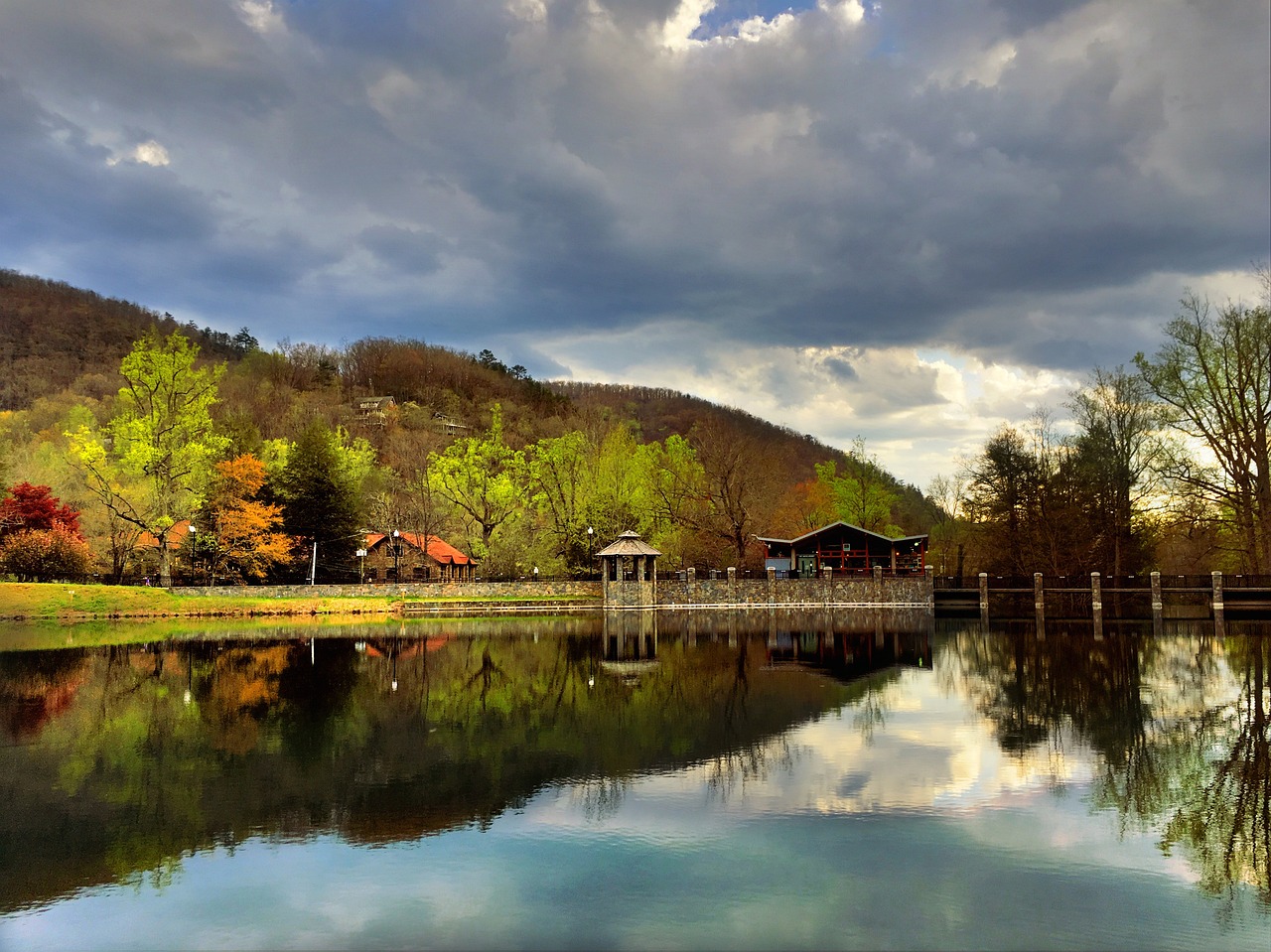
Building Process Overview
Embarking on the journey to build your wooden gazebo is like setting off on an exciting adventure. Each step is crucial, and understanding the entire process will not only save you time but also enhance your overall experience. So, let’s break it down into manageable parts, shall we?
The first step in the building process is to prepare your site. Clear the area where your gazebo will stand, removing any debris, plants, or obstacles. This step is essential to ensure a solid foundation. You wouldn't want to build your dream gazebo on shaky ground, right?
Next up is the foundation. Depending on your design and local climate, you can choose between a concrete slab, pier blocks, or a wooden platform. Each option has its benefits, so consider factors like moisture and frost lines in your area. A well-laid foundation is like the bedrock of your gazebo; it supports everything above it.
Once your foundation is set, it’s time to frame the structure. This is where the magic begins! Use treated lumber for the framing to ensure it withstands the elements. Begin with the floor frame, attaching the joists securely. Then, move on to erecting the vertical posts that will form the skeleton of your gazebo. Remember, this is a collaborative effort; make sure to have someone help you hold the posts in place while you secure them.
After the framing is up, you can start adding the roof. The roof not only adds character to your gazebo but also protects it from the elements. You can choose from various styles, such as gabled, hip, or even a flat roof. Each style has its unique flair, so pick one that complements your home and garden.
Don't forget about the finishing touches! This includes adding railings, steps, and any decorative elements you desire. These details can transform your gazebo from a simple structure to a stunning focal point in your yard. Consider incorporating features like built-in seating or planters to enhance functionality and aesthetics.
Finally, it’s essential to apply protective finishes. Whether you choose paint, stain, or sealant, these treatments will help guard your gazebo against moisture, UV rays, and pests. Think of it as giving your gazebo a protective armor, ensuring it remains beautiful for years to come.
In summary, the building process of your wooden gazebo can be broken down into several key phases: preparing the site, laying the foundation, framing the structure, adding the roof, finishing touches, and applying protective treatments. Each step plays a vital role in creating a structure that is not only visually appealing but also durable and functional.
- How long does it take to build a gazebo? The timeline can vary based on size and complexity, but typically, it can take anywhere from a weekend to several weeks.
- Do I need a permit to build a gazebo? Yes, it's essential to check local regulations as permits may be required depending on your location.
- What is the best wood for building a gazebo? Cedar and redwood are popular choices due to their natural resistance to rot and insects, but treated pine is also a cost-effective option.
- How can I maintain my gazebo? Regular cleaning, inspecting for damage, and applying protective finishes will help keep your gazebo in great condition.

Permits and Regulations
Before diving headfirst into the exciting world of gazebo building, it's absolutely crucial to navigate the maze of . Think of it as the foundation of your project—without it, everything else might come crashing down. Local governments often have specific guidelines regarding structures in residential areas, and ignoring these can lead to fines or, worse, being forced to tear down your beloved gazebo!
The first step in this process is to check with your local zoning office. They can provide you with the necessary information about whether you need a permit for your gazebo. Some areas have restrictions based on the size, height, and location of the structure. For instance, if you plan to build a larger gazebo, you may need to adhere to specific setback requirements, which dictate how far from property lines your gazebo must be.
Moreover, if your property is located in a homeowners' association (HOA) jurisdiction, they may have additional rules. It's wise to consult your HOA guidelines to ensure your gazebo complies with their aesthetic standards and regulations. This can save you a lot of headaches down the line!
Here’s a quick rundown of common regulations you might encounter:
- Height Restrictions: Many areas have limits on how tall your gazebo can be.
- Setback Requirements: This refers to how far your gazebo must be from your property lines.
- Building Codes: These codes ensure that your gazebo is safe and structurally sound.
- Permitting Process: Some localities require a formal application and inspection before you can start building.
Once you've gathered all the necessary information and secured your permits, keep copies of all documents on hand. This will not only help you stay organized but will also be beneficial if any disputes arise in the future.
In summary, while permits and regulations might seem like a hassle, they are there to protect you and your property. By following the rules, you can enjoy your gazebo worry-free, knowing that you built it the right way!
Do I need a permit for a small gazebo?
It depends on your local regulations. Some areas allow small, temporary structures without a permit, while others have specific rules regardless of size.
How long does it take to get a permit?
The time frame can vary significantly based on your location and the specific requirements. It could take anywhere from a few days to several weeks.
What happens if I build without a permit?
Building without a permit can lead to fines, and you may be required to dismantle your gazebo if it does not meet local codes.
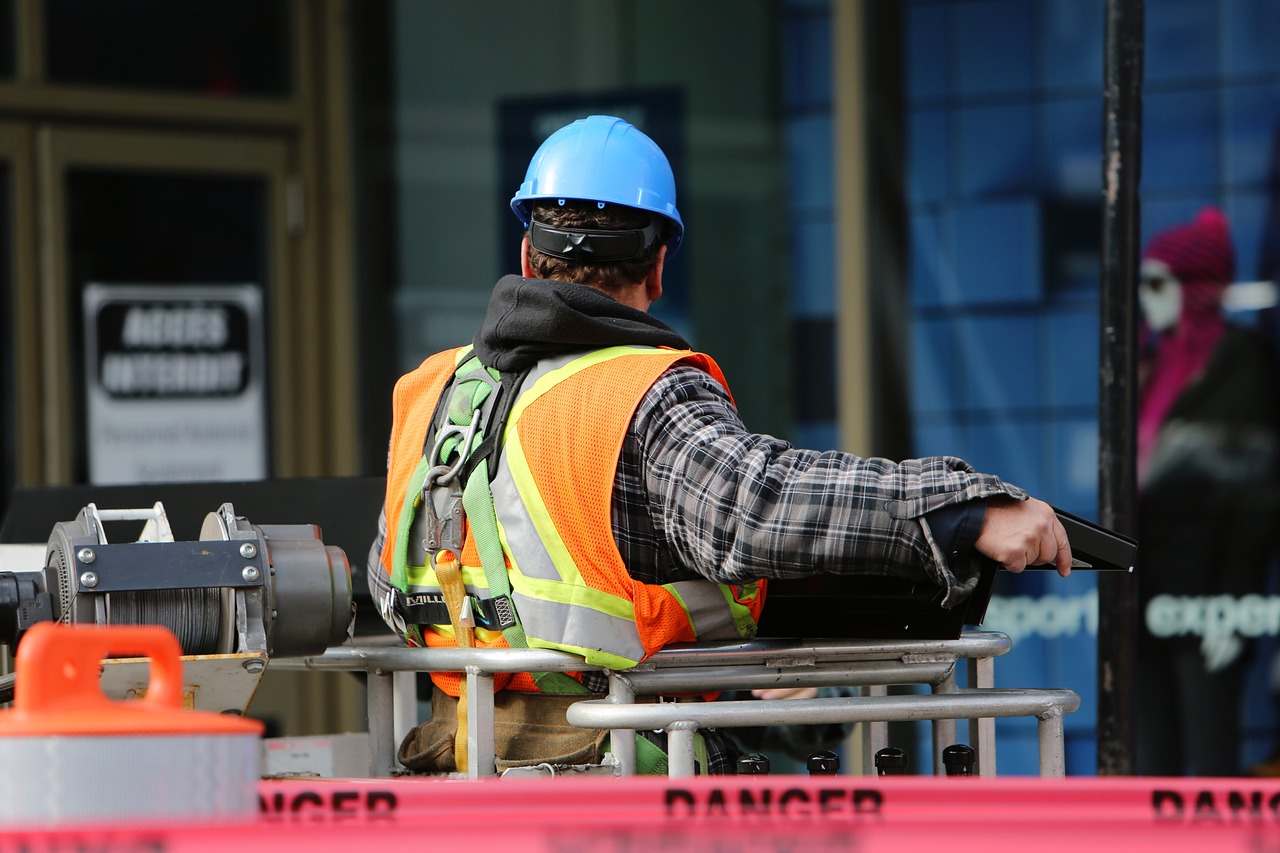
Safety Considerations
When embarking on the exciting journey of building your own wooden gazebo, it's crucial to prioritize safety. This isn’t just about keeping yourself safe; it’s about ensuring that everyone around you is protected too. Imagine the thrill of seeing your gazebo take shape, but that thrill can quickly turn to dread if safety isn’t taken seriously. So, what should you keep in mind?
First and foremost, wearing appropriate protective gear is non-negotiable. This includes safety goggles to shield your eyes from dust and debris, gloves to protect your hands from splinters, and a hard hat if you're working with heavy materials. Don't forget about sturdy footwear to prevent injuries from falling objects! It might seem like a hassle to don all this gear, but trust me, it’s worth it for the peace of mind it brings.
Another vital aspect of safety is maintaining a clean and organized workspace. A cluttered area can lead to accidents, so take the time to clear away any unnecessary tools or materials. Think of it this way: a tidy workspace is like a clear mind; it allows you to focus on the task at hand without distractions. As you work, keep a first aid kit nearby, just in case of any minor injuries. It’s always better to be prepared!
Additionally, be aware of your surroundings. If you're using power tools, make sure that no one is standing too close. It's easy to get caught up in the excitement of building, but a moment of distraction can lead to serious accidents. Establish a designated work zone and communicate with anyone nearby about your activities to keep everyone informed and safe.
Here’s a quick summary of key safety tips to remember:
- Wear protective gear: goggles, gloves, hard hats, and sturdy shoes.
- Keep your workspace clean and organized to prevent accidents.
- Maintain awareness of your surroundings, especially when using power tools.
- Have a first aid kit readily available for minor injuries.
Finally, if you’re working with friends or family, make sure everyone is on the same page regarding safety protocols. A team that communicates well is a safe team. Before starting, hold a brief meeting to discuss the project and any potential hazards. This not only boosts safety but also enhances teamwork, making the building process more enjoyable.
Q: What protective gear should I wear while building a gazebo?
A: It's essential to wear safety goggles, gloves, a hard hat, and sturdy footwear to protect yourself from injuries.
Q: How can I keep my workspace safe?
A: Maintain a clean and organized workspace, keep tools stored safely when not in use, and ensure that your work area is free from clutter.
Q: What should I do if someone gets injured during construction?
A: Always have a first aid kit on hand. For minor injuries, treat them immediately. For serious injuries, seek professional medical help right away.
Q: Is it necessary to have someone help me while building?
A: While it’s possible to build a gazebo alone, having a helper can make the process safer and more efficient. Plus, it’s more fun to work with someone else!
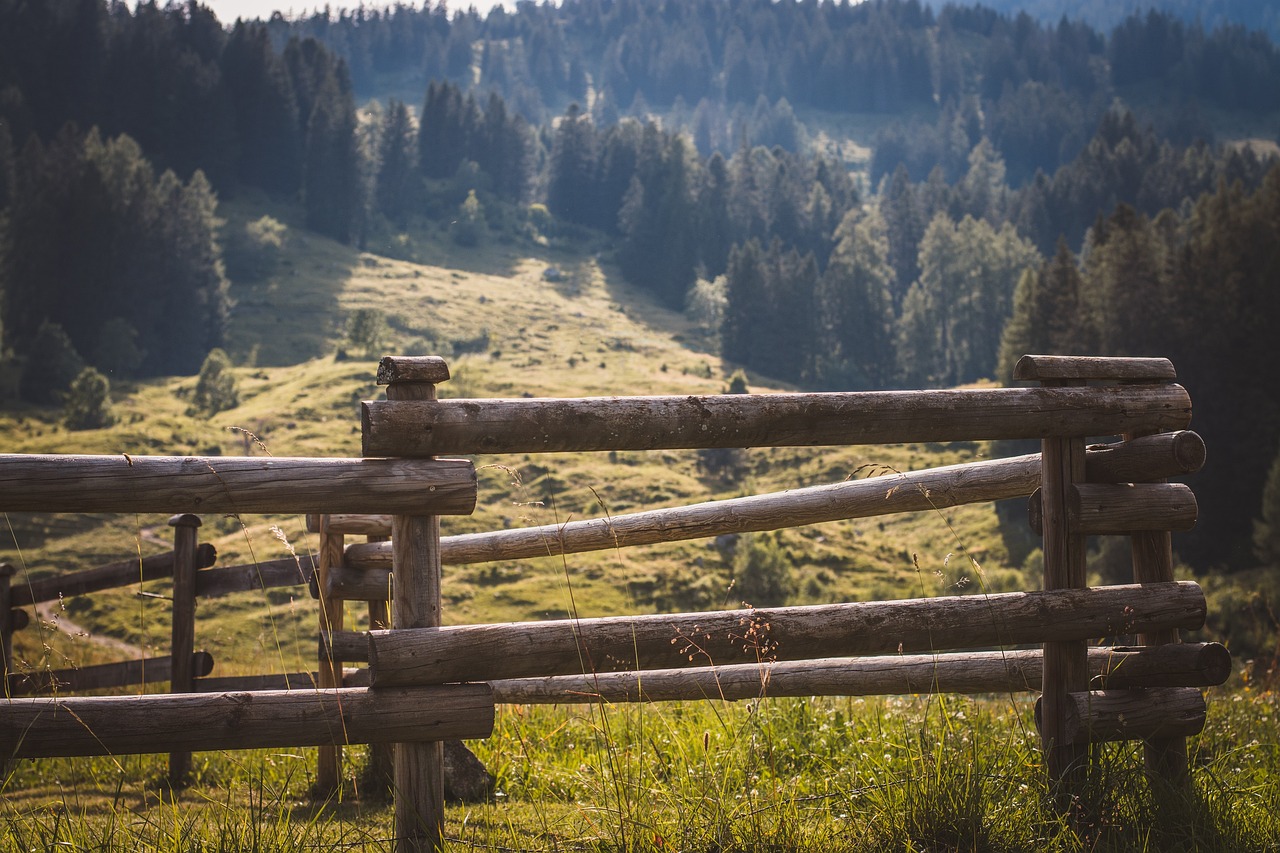
Maintenance Tips
Once your beautiful wooden gazebo is standing tall in your backyard, you’ll want to ensure it remains a stunning focal point for years to come. Regular maintenance is key to preserving its beauty and functionality. Think of your gazebo as a cherished piece of art; it needs care and attention to shine. First off, consider the seasonal changes that can affect your gazebo. Just like how we change our wardrobe with the seasons, your gazebo requires different care throughout the year.
In the spring, inspect your gazebo for any winter damage. Look for loose boards, rusted fasteners, or signs of mold. A good cleaning is essential; use a gentle pressure washer or a scrub brush with soapy water to remove dirt and grime. After cleaning, check for any needed repairs. If you notice any cracks in the wood, fill them with a suitable wood filler to prevent moisture from seeping in.
As summer rolls in, you’ll want to focus on protecting your gazebo from the sun's harsh rays. Applying a quality UV-resistant stain can help maintain the wood's natural color and prevent fading. Additionally, consider using a sealant to protect against moisture and insects. A well-sealed gazebo is like a well-guarded treasure; it keeps the elements at bay.
When fall arrives, it's time to prepare your gazebo for the winter months. Remove any leaves or debris that may collect on the roof and in the gutters. This simple task can prevent water buildup that could lead to rot. If you live in an area with heavy snowfall, consider a roof rake to gently remove snow accumulation. Just as you wouldn't let snow pile up on your car, your gazebo deserves the same care!
During winter, if you live in a particularly cold climate, it’s wise to cover your gazebo with a breathable tarp to protect it from the harsh elements. This is like wrapping your gazebo in a warm blanket, ensuring it stays cozy and protected.
To wrap up your maintenance routine, here are some quick tips to keep your gazebo in tip-top shape:
- Inspect regularly: Make it a habit to check your gazebo every few months for any signs of wear.
- Clean thoroughly: Use gentle cleaning methods to avoid damaging the wood.
- Seal and stain: Refresh the protective coatings every couple of years to maintain its beauty.
By following these maintenance tips, you’ll not only prolong the life of your gazebo but also enhance its charm, ensuring it remains a delightful spot for gatherings, relaxation, and enjoying the beauty of your outdoor space. Remember, a well-cared-for gazebo is not just a structure; it’s a place where memories are made!
Q: How often should I clean my gazebo?
A: It’s best to clean your gazebo at least twice a year, ideally in the spring and fall, to prevent dirt buildup and damage.
Q: What type of wood is best for a gazebo?
A: Cedar and redwood are popular choices due to their natural resistance to decay and insects. Pine is also an option but requires more maintenance.
Q: Can I paint my gazebo instead of staining it?
A: Yes, you can paint your gazebo, but be sure to use a high-quality exterior paint designed for wood to ensure longevity and protection.
Q: How do I protect my gazebo from insects?
A: Regularly applying a sealant and inspecting for cracks can help keep insects at bay. You might also consider using insect repellent sprays designed for outdoor wood structures.
Frequently Asked Questions
-
What is the best location for my wooden gazebo?
Choosing the right location for your gazebo is key to maximizing its use. Look for a spot that gets enough sunlight for warmth but also provides some shade during hot days. Additionally, consider wind direction and how close it is to your home for easy access and integration with your outdoor space.
-
What materials do I need to build a gazebo?
You'll need a variety of materials to build a sturdy gazebo. This typically includes quality wood like cedar or redwood, fasteners such as screws and nails, and finishes like stains or sealants to protect your structure. Each material plays a vital role in ensuring your gazebo lasts for years to come.
-
Do I need a permit to build a gazebo?
Yes, obtaining a permit is often necessary before starting your gazebo project. Local regulations can vary widely, so it's crucial to check with your city or county to understand the specific requirements in your area. This can save you from potential legal hassles down the road.
-
How do I maintain my gazebo once it’s built?
Regular maintenance is essential to keep your gazebo looking great and standing strong. This includes routine cleaning, checking for any signs of wear or damage, and applying protective finishes as needed. Seasonal preparations, like clearing debris and inspecting for rot, also help prolong its life.
-
What type of wood is best for building a gazebo?
Choosing the right wood is crucial for durability and aesthetics. Cedar is often favored for its natural resistance to decay and insects, while redwood offers beautiful grain patterns. Pine is a more affordable option but may require more maintenance. Each type has its pros and cons, so consider your budget and desired look.
-
What safety precautions should I take while building?
Safety should be a top priority during construction. Always wear protective gear like gloves, goggles, and a hard hat. Ensure your work area is clear of hazards and use tools properly to avoid injuries. If you're working with others, communicate clearly to maintain a safe environment.



















